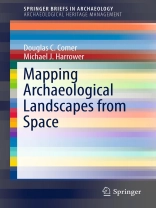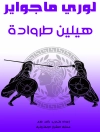Mapping Archaeological Landscapes from Space offers a concise overview of air and spaceborne imagery and related geospatial technologies tailored to the needs of archaeologists. Leading experts including scientists involved in NASA’s Space Archaeology program provide technical introductions to five sections:
1) Historic Air and Spaceborne Imagery
2) Multispectral and Hyperspectral Imagery
3) Synthetic Aperture Radar
4) Lidar
5) Archaeological Site Detection and Modeling
Each of these five sections includes two or more case study applications that have enriched understanding of archaeological landscapes in regions including the Near East, East Asia, Europe, Meso- and North America. Targeted to the needs of researchers and heritage managers as well as graduate and advanced undergraduate students, this volume conveys a basic technological sense of what is currently possible and, it is hoped, will inspire new pioneering applications.
Particular attention is paid to the tandem goals of research (understanding) and archaeological heritage management (preserving) the ancient past. The technologies and applications presented can be used to characterize environments, detect archaeological sites, model sites and settlement patterns and, more generally, reveal the dialectic landscape-scale dynamics among ancient peoples and their social and environmental surroundings. In light of contemporary economic development and resultant damage to and destruction of archaeological sites and landscapes, applications of air and spaceborne technologies in archaeology are of wide utility and promoting understanding of them is a particularly appropriate goal at the 40th anniversary of the World Heritage Convention.
Tabla de materias
Chapter Outline Introduction: The History and Future of Geospatial Technologies in Archaeology The Corona NASA ROSES Project Use of Corona in Archaeology of China Section 1: Multispectral and Hyperspectral Imagery Multispectral Technology and Archaeological Applications Understanding the Development of Nabataean Agriculture Through the Use of Landsat and Aster Imagery Using Hyperion at Faynan, Jordan Using Satellite Imagery to Monitor Change at Ancient Gordian, in Turkey Merging Satellite Observations and Hydrological Models Section 2: Synthetic Aperture Radar Synthetic Aperture Radar, Technology, Past and Future Applications to Archaeology The use of multispectral imagery and airborne synthetic aperture radar for the detection of archaeological sites and features in the western Maya wetlands of Chunchucmil, Yucatan, Mexico. Using SAR to Model Spatial Relationships among Mayan Groups on the Usumacinta River Site Detection Using Synthetic Aperture Radar on the Southern Channel Islands, California Section 3: Lidar LIDAR Technology and Applications to Archaeology The Use of LIDAR at the Maya Site of Caracol, in Belize The Lake Patzcuraro Archaeology Project Section 4: Site Distribution Modelling and Detection Agent Based Modelling for Archaeological Landscapes as Reconstructed in Aerial and Satellite Remote Sensing Imagery Archaeological Site Pattern Analysis on San Clemente Island, California Statistical Advances for the Automated Detection of Archaeological Sites Detection of Archaeological Sites Using Merged Sensor Input from Airborne and Satellite Platforms On tomb detection and distribution modelling in Yemen/Oman Cultural Factors in Archaeological Predictive Modelling
Sobre el autor
Douglas Comer holds a Ph.D. from the University of Maryland, College Park. He is the recipient of numerous grants for the development of aerial and satellite remote sensing technologies and GIS for archaeological research and cultural resource preservation, and has published extensively on archaeology and landscape management. A Fulbright Scholar in cultural resource management and former Chair of the Maryland Governor’s Advisory Committee on Archaeology, he served two terms on the Board of Trustees for the United States Committee for the International Council of Monuments and Sites (US/ICOMOS) and has been Chair of the Nominations Committee for the Register of Professional Archaeologists. He is currently Co-President of the International Committee on Archaeological Heritage Management (ICAHM) for ICOMOS, and ex-officio member of the US/ICOMOS Board of Trustees representing the Society for American Archaeology (SAA).
Michael Harrower is an Assistant Professor in the Department of Near Eastern Studies at Johns Hopkins University and Research Associate of the Smithsonian National Museum of Natural History. He is a specialist in Geographic Information Systems (GIS), satellite remote sensing, and advanced GPS mapping in archaeology. His field research in Yemen, Ethiopia and Oman has been funded by agencies including NASA, The National Science Foundation (NSF) and the Social Sciences and Humanities Research Council (SSHRC) of Canada. In the past ten years he has more than ten publications in international peer-reviewed journals, many involving the use advanced geospatial technologies.












